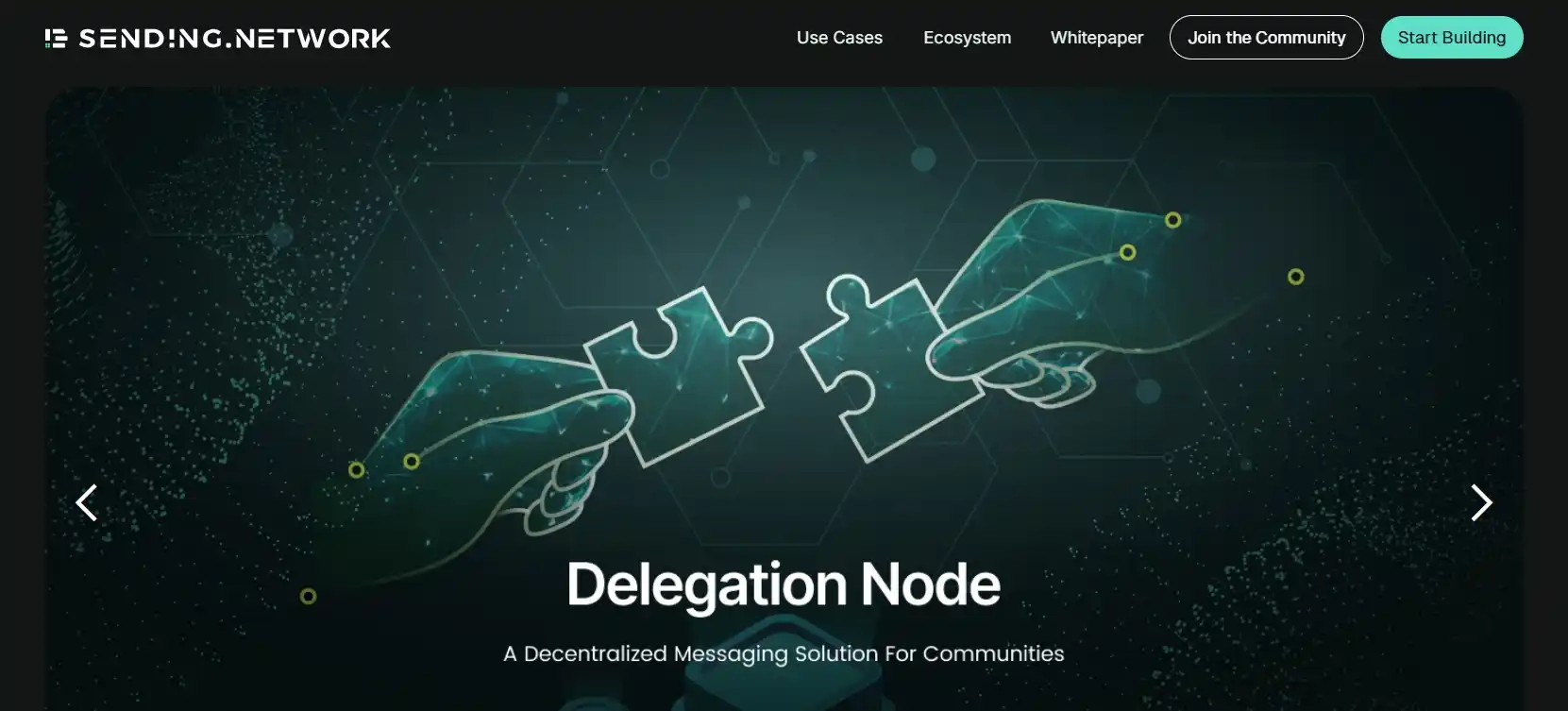In today's digital world, centralized platforms control our data and communication. Sending Network offers a revolutionary approach by creating a decentralized communication ecosystem based on blockchain. This project is not just another messenger; it's an infrastructure layer for Web3 where users gain complete sovereignty over their information and interactions. The platform combines messaging capabilities, financial transactions, and community management while ensuring security and privacy through advanced cryptographic methods.
Contents:
- The Problem of Centralization and Sending Network's Vision
- Architecture of the Decentralized Network (DePIN)
- Platform Security and Confidentiality as Foundation
- Tokenization and Sending Network Economy
- Application in Web3 Ecosystem and Project Future
- Conclusion
The Problem of Centralization and Sending Network's Vision
Modern communication platforms store user data on centralized servers, creating risks of information leaks and external control. This model not only limits digital sovereignty but also exposes user privacy to constant threats from corporations and regulators.
Sending Network offers an alternative paradigm where data control returns to its owners. The platform creates an open decentralized ecosystem that combines communication, financial operations, and community management. This approach forms a fundamentally new infrastructure for Web3, free from traditional limitations.
Architecture of the Decentralized Network (DePIN)
At the core of Sending Network lies a fundamentally new architecture built on the concept of Decentralized Physical Infrastructure (DePIN). This solution radically differs from the traditional client-server model used by most modern messengers. Instead of relying on central servers, it employs a peer-to-peer (P2P) network where each node can directly interact with other participants.
Key architectural components include:
- P2P Network: Direct interaction between user devices without intermediary servers.
- Decentralized Identifiers (DID): Complete control over digital identity without provider dependency.
- Decentralized Storage: Distributed data storage across network nodes.
- Incentive Mechanism: Reward system for participants providing resources.
This approach makes the system more resilient to censorship and external attacks since there are no single points of failure. Network scalability is achieved through active user participation - by providing computing resources and storage space, users receive rewards while simultaneously contributing to the development of the entire ecosystem.
Platform Security and Confidentiality as Foundation
Security and confidentiality principles are fundamental to Sending Network's architecture. Unlike traditional platforms where metadata and message content may be stored on central servers, it employs a comprehensive cryptographic approach. The system uses end-to-end encryption, ensuring that only the sender and recipient have access to content.
For additional protection, advanced metadata masking methods are applied, concealing information about communication participants and transmission timing. The decentralized data storage architecture eliminates risks of mass data collection characteristic of centralized providers. This establishes a new standard for digital confidentiality where users maintain complete control over their personal data at all interaction stages.
Tokenization and Sending Network Economy
To create a sustainable and self-sufficient ecosystem, Sending Network implements its own tokenomics. The internal token serves not only as a means of payment but also as a key element for participant incentivization and decentralized governance. Its functionality is multifaceted and permeates all key network processes.
Main token functions in the ecosystem:
- Participant Incentivization: Rewards for providing computing resources or data storage.
- Operational Expenses: Payment for transaction fees and network capability usage.
- Community Governance: Voting rights in platform development decisions through DAO mechanisms.
Thus, the cryptoasset unites technical infrastructure and community economic interests. This model creates a positive feedback loop where the more users invest in network development, the greater rewards they receive, contributing to long-term stable growth of the entire ecosystem.
Application in Web3 Ecosystem and Project Future
Sending Network finds practical application across various decentralized internet spheres, extending far beyond simple messaging. Its infrastructure enables comprehensive solutions where communication is tightly integrated with other user activities. This opens new opportunities for developers and entire Web3 industries.
| Application Area | Sending Network Advantage |
|---|---|
| Decentralized Organizations (DAO) | Secure member coordination and integrated governance with voting. |
| Blockchain Games (GameFi) | In-game chat between players and direct asset transfers. |
| Decentralized Finance (DeFi) | Strategy discussions and transparent communications between liquidity pools. |
| Social dApps | Creation of metadata-masked social networks and communities. |
Project development prospects include further P2P network scaling to support millions of users and deeper integration with various blockchain ecosystems. Improving user experience and developing additional tools for dApps creators remain key tasks on the path to mass technology adoption.
Conclusion
Sending Network represents a qualitatively new stage in digital communications development, offering a complete alternative to outdated centralized models. The project successfully integrates communication, financial operations, and governance into a unified decentralized ecosystem where user sovereignty is prioritized.
By returning data control and implementing a transparent economic model, the platform lays the foundation for a more fair and secure digital space. By eliminating traditional intermediaries, Sending Network paves the way for genuinely free interaction in the Web3 era, where every participant receives real value and rights.





